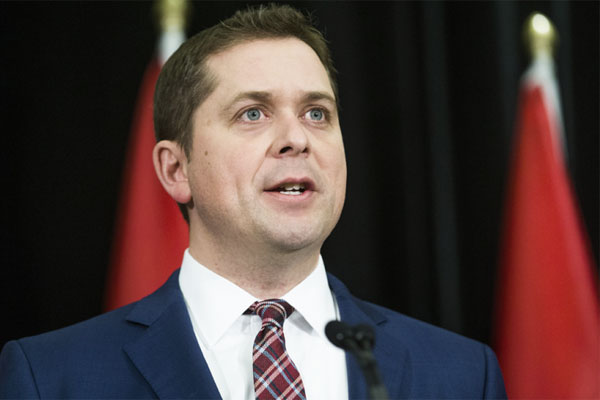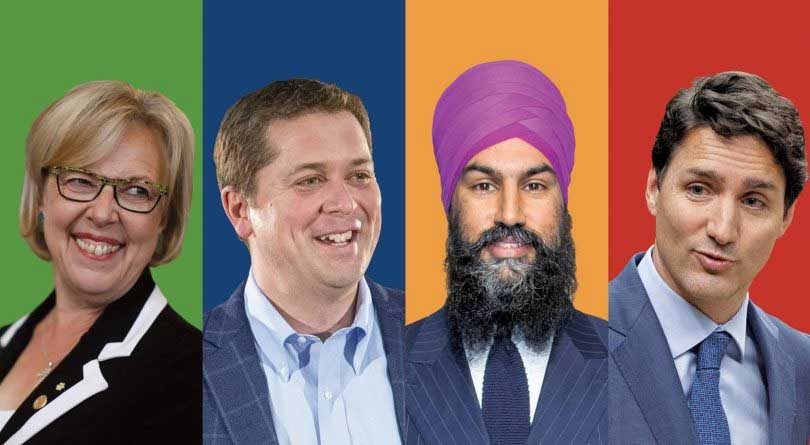In less than 100 days, Canadian voters will head to the polls to decide the next 4-year mandate. Likely, this means choosing between Justin Trudeau and the Liberals, or Andrew Scheer and the Conservatives.
For many businesses, the familiar feeling of election uncertainty looms in the air. Industries which are supported primarily along partisan lines, such as renewable energy, know that a changing mandate often forecasts trouble.
Frequent policy changes tend to create uncertainty in markets, which can stunt industry growth. Since climate change, and as an extension, solar energy, have become partisan issues, a change in government could mean sudden destruction of industry support.
To varying degrees, Canadian left-wing parties are supportive of incentives to increase solar production and reduce emissions.
In contrast, the right-wing parties generally favor reducing or eliminating support for clean energy. With this contentious split in policy, it’s not hard to understand why clean energy business owners and investors become wary during election times.
Yet for clean energy, this election season is different, as it’s already marked an ideological win. Public opinion has swayed substantially in the direction of the left-wing approach to climate.
That is, the public wants to see climate change and other environmental issues addressed. According to an abacus poll conducted on July 15, climate change has broken the top 3 issues list for Canadian voters.
This is in line with other polls, which have consistently shown that climate change and the environment have quickly become central issues for Canadian voters. This is likely due to the ever-increasing visibility of the issue.
Heatwaves, flooding and erratic seasonal weather seem to be the new norm and saturate the news media. High profile individuals, such as Greta Thunberg, have also fought to increase awareness on the importance of mitigating climate change.
Largely, Thunberg’s efforts have been successful, as her protest “Fridays for Future” has become a global phenomenon, with students all across Canada taking part.

Greta Thunberg and her skipper Boris Herrmann in Plymouth, England, shortly before sailing to the Americas on August 14, 2019 (Alexandra Ma/Business Insider)
For the first time, millennials will make up the largest voting bloc in the Canadian election. Millennials overwhelmingly favor decisive climate action, yet are prone to election apathy.
Regardless, this demographic change has contributed to the transformation of Canada’s political landscape.
As the Canadian electorate makes clear the environment is not an issue that can be ignored any longer, the federal parties are taking notice.
The Liberals, Conservatives, NDP and Greens have all released their environmental platforms. While there are significant differences among each of the plans, it’s clear that all of the parties understand the importance voters are placing on the environment. It’s a sad reality that political parties are responding to a changing electorate rather than a changing climate, but regardless, this is good news.
Under the leadership of Andrew Scheer, the Conservative party has altered its messaging regarding the environment. The Conservatives have long been the party of fossil fuels, but in the current political climate, the party has worked to appear as a middle-ground option.
The Conservative environmental plan, dubbed “A Real Plan to Protect Our Environment,” puts a heavy emphasis on innovation and technology. It establishes several key initiatives, such as a green home tax credit, a green patent credit, a green technology and innovation fund, and a green hub for innovators.

Andrew James Scheer PC MP is a Canadian politician serving as Member of Parliament for the riding of Regina—since 2004. He is Leader of the Conservative Party and Leader of the Official Opposition since 2017 (Ernest Doroszuk/Toronto Sun/Postmedia)
Unfortunately, while the Conservative party’s rhetoric has become greener, the party’s policy still leaves much to be desired. The core initiatives of the plan may support green business innovation, but they don’t ensure a concrete reduction in carbon emissions.
The entire plan is devoid of any estimates or targets. Euphemisms are also riddled throughout, such as the line “carbon emissions are a global problem.” This is nothing more than an excuse to rid a country of domestic responsibility and tends to be coupled with support for exporting fracked natural gas.
Recent studies have shown that fracking is much more dangerous to the climate than previously thought, with some scientists even claiming the carbon footprint rivals that of coal.
The Conservative plan also fails to mention anything regarding single-use plastics, which are contributing to the collapse of global biodiversity.
While “A Real Plan to Protect Our Environment” is nowhere near sufficient to adequately mitigate climate change, the shift in party messaging shows the Conservatives understand the changing electorate. One danger of having mismatched rhetoric and policy is that if the Conservatives win the election, it will be nearly impossible for Andrew Scheer to walk the appeasement tightrope between Western Canada and environmentally conscious voters.
On the other end of the environmental policy spectrum lies the Green Party, which has enjoyed a modest bump in support in the last couple of years.
The Greens have released an ambitious and comprehensive plan that addresses several aspects of climate change.
The plan, titled “Mission Possible,” outlines several key objectives. Among them is a bi-partisan war cabinet to tackle the partisanship which has stalled climate action. “Mission Possible” would double the Liberals 2030 goal of reducing emissions by 30 percent of 2005 levels, to 60 percent.
The plan would eliminate all fossil fuel subsidies, ensure all vehicle production is electric by 2030, place a nationwide ban on fracking and promote the redevelopment of Canada’s forests, among other things.
The growing political influence of Elizabeth May’s Green Party has begun to apply significant pressure to the other federal parties. Jagmeet Singh and the Federal NDP recently faced questions over their support of fracking, as the party had expressed support for the liquified natural gas (LNG) plant in British Columbia.

Green Party Leader Elizabeth May says not enough is being done to tackle climate change, and the future is at risk if that doesn’t change (Justin Tang/Canadian Press)
The Greens have consistently been eating away at NDP support across the country, with some high profile NDP members, such as former MP Sven Robinson, criticizing the NDP’s lack of environmental ambition. One week after losing a byelection to the Green’s Paul Manly, the Federal NDP released a statement saying “the future of Canada does not include fracking.”
This rapid shift in policy demonstrates the pressure an ever-growing Green Party can apply in Canada’s political arena.
The NDP and Liberals are now fighting for environmental credibility, with Prime Minister Trudeau announcing a ban on single-use plastics as a part of the Liberal reelection platform.
The 2019 federal election may have yet to be decided, though it’s already marked an important victory for clean energy.
Canadian voters are increasingly in favor of decarbonizing, as the public’s frustration with irresponsible fossil fuel development grows. As global environmental crises continue to accelerate in severity, the popularity of clean energy will only increase.
So, clean energy providers should celebrate, as their business opportunities are practically guaranteed exponential growth. While on the other hand, fossil fuel companies should be terrified, as public sentiment has turned, and the era of fossil fuels is rapidly closing.












Comments